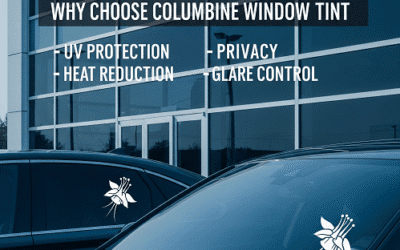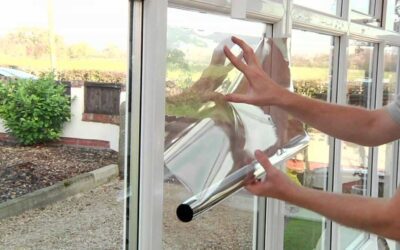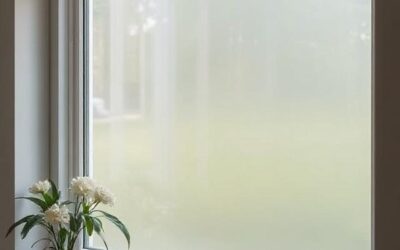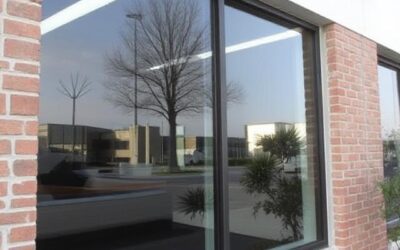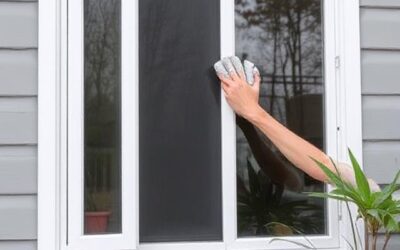The Science Behind Energy-Efficient Window Tinting
Introduction
As we strive for more sustainable living, the quest for energy efficiency has become a central theme in modern design and technology. Windows, essential for natural light and ventilation, play a crucial role in a building’s energy dynamics. In this exploration, we delve into the science behind energy-efficient window tinting. Specifically, we’ll unravel the significance of choosing the right window tint, its applications in interior design, and how Columbine Window Tint, a leader in residential and commercial window tinting, contributes to a greener and more efficient future.
Understanding Energy Efficiency in Windows
Before delving into the specifics of window tinting, it’s essential to understand what energy efficiency means concerning windows. Energy-efficient windows are designed to minimize the transfer of heat between the interior and exterior of a building. They act as a barrier to the outside temperature, helping to maintain a comfortable environment inside. Traditional windows, while essential for natural light, can contribute to heat gain in the summer and heat loss in the winter, leading to increased energy consumption for cooling and heating.

The Role of Window Tinting in Energy Efficiency
Window tinting is a game-changer in the pursuit of energy efficiency. It involves applying a thin film to the interior of windows, altering their properties to reduce heat transfer and control light penetration. The science behind window tinting lies in its ability to selectively absorb, reflect, and transmit solar energy. By strategically adjusting these properties, window tinting can significantly impact the thermal performance of windows.
Types of Window Tints for Energy Efficiency
Several types of window tints are specifically engineered for energy efficiency:
1. Solar Control Window Films:
- Designed to block a percentage of solar radiation, reducing heat gain and glare. This helps maintain a comfortable temperature inside, reducing the need for excessive cooling.
2. Low-E Window Films:
- Low-emissivity films are engineered to reflect infrared radiation while allowing visible light to pass through. This aids in maintaining a consistent temperature within a space, regardless of external weather conditions.
3. Reflective Window Films:
- These films create a reflective surface on the exterior, bouncing off a significant portion of solar radiation. This not only improves energy efficiency but also enhances privacy.
Benefits of Energy-Efficient Window Tinting for Residential Spaces
Implementing energy-efficient window tinting in residential spaces comes with a multitude of benefits:
1. Reduced Energy Consumption:
- By moderating the internal temperature, energy-efficient window tinting reduces the reliance on heating and cooling systems, leading to lower energy bills.
2. Enhanced Comfort:
- Maintaining a consistent temperature minimizes uncomfortable hotspots and drafts, creating a more comfortable living environment.
3. Protection of Furnishings:
- Tinting acts as a barrier against harmful UV rays, protecting furnishings, flooring, and artwork from fading and deterioration.
4. Privacy Without Sacrificing Light:
- Tinting offers privacy without compromising on natural light, providing an optimal balance for residential spaces.
Commercial Applications: Enhancing Energy Efficiency in Business Environments
The advantages of energy-efficient window tinting extend seamlessly into commercial settings:
1. Cost Savings for Businesses:
- Reducing energy consumption translates into substantial cost savings for businesses, contributing to a more sustainable and profitable operation.
2. Productivity and Comfort:
- Employees in spaces with regulated temperatures experience increased comfort, leading to enhanced productivity and overall well-being.
3. Sustainable Corporate Image:
- Embracing energy-efficient practices, including window tinting, contributes to a positive corporate image aligned with environmental responsibility.
Columbine Window Tint’s Specialized Energy-Efficient Solutions
Columbine Window Tint stands at the forefront of providing cutting-edge solutions for energy-efficient window tinting. Their commitment to sustainability and innovation is evident in their range of specialized window films.
1. Expert Guidance in Tint Selection:
- The team at Columbine offers expert advice to clients, guiding them in selecting the most suitable tint for their specific needs and design preferences.
2. Custom Solutions Tailored to Design Needs:
- Understanding that every space is unique, Columbine provides customized solutions, ensuring that their window tints seamlessly integrate into the design vision of residential and commercial clients.
3. Professional Installation Ensuring Design Harmony:
- The quality of installation is as critical as the choice of tint. Columbine Window Tint ensures that the installation is carried out with precision, guaranteeing optimal performance and aesthetic harmony.
4. Long-Term Design Benefits with Columbine’s Tints:
- The window tints provided by Columbine are designed for durability, energy efficiency, and UV protection. Choosing Columbine is an investment in the longevity of your design and the sustainability of your space.
Comparing Energy Efficiency: Window Tinting vs. Other Solutions
In the quest for energy efficiency, window tinting holds its ground against other solutions:
1. Window Tinting vs. Double Glazing:
- While double glazing is effective, window tinting offers a more cost-effective solution with comparable energy-saving benefits.
2. Window Tinting vs. Blinds and Curtains:
- Tinting provides a permanent solution that doesn’t require constant adjustment, offering a hassle-free and efficient alternative to traditional window treatments.
Installation and Maintenance Tips for Energy-Efficient Window Tints
Ensuring the effectiveness of energy-efficient window tints requires proper installation and maintenance:
1. Professional Installation:
- It’s crucial to have window tints professionally installed to guarantee proper functionality and longevity.
2. Regular Cleaning and Maintenance:
- Simple maintenance practices, such as regular cleaning, can ensure that the tints perform optimally for years to come.
Case Studies: Real-world Examples of Energy Savings with Window Tinting
Real-life examples serve as compelling evidence of the tangible benefits of energy-efficient window tinting. Case studies highlight instances where businesses and residences have experienced significant energy savings and improved comfort through the implementation of window tinting.
FAQs: Addressing Common Questions About Energy-Efficient Window Tinting
Addressing common questions provides clarity for those considering energy-efficient window tinting:
1. Are Energy-Efficient Window Tints Worth the Investment?
- Exploring the long-term cost savings and environmental benefits of investing in energy-efficient window tints.
2. Do Window Tints Block Natural Light?
- Clarifying how modern window tints are designed to allow natural light while blocking harmful UV rays.
Conclusion: Embracing Energy Efficiency with Columbine Window Tint
In conclusion, the science behind energy-efficient window tinting is a testament to the transformative power of technology in creating sustainable and comfortable living and working spaces. Columbine Window Tint emerges as a leader in providing state-of-the-art solutions that not only contribute to energy efficiency but also elevate the aesthetic appeal of residential and commercial spaces.
As we navigate a world that increasingly values sustainability, the choice of the right window tint becomes pivotal. It’s not just about saving on energy bills; it’s about contributing to a greener future while enjoying the immediate benefits of enhanced comfort, UV protection, and privacy. Columbine Window Tint stands as a beacon, offering a range of specialized window films designed to meet the diverse needs of modern living and business environments.
In the seamless integration of science, design, and sustainability, Columbine Window Tint ensures that your windows not only serve a functional purpose but become integral elements of your design narrative. It’s a journey toward a future where every window is a portal to comfort, efficiency, and a more sustainable way of life.
